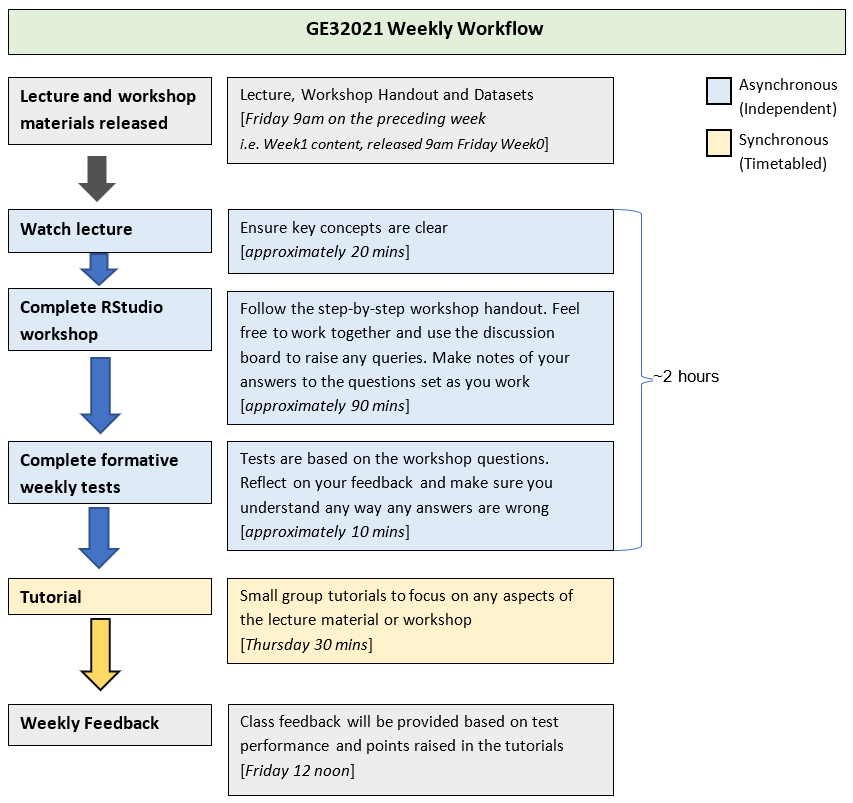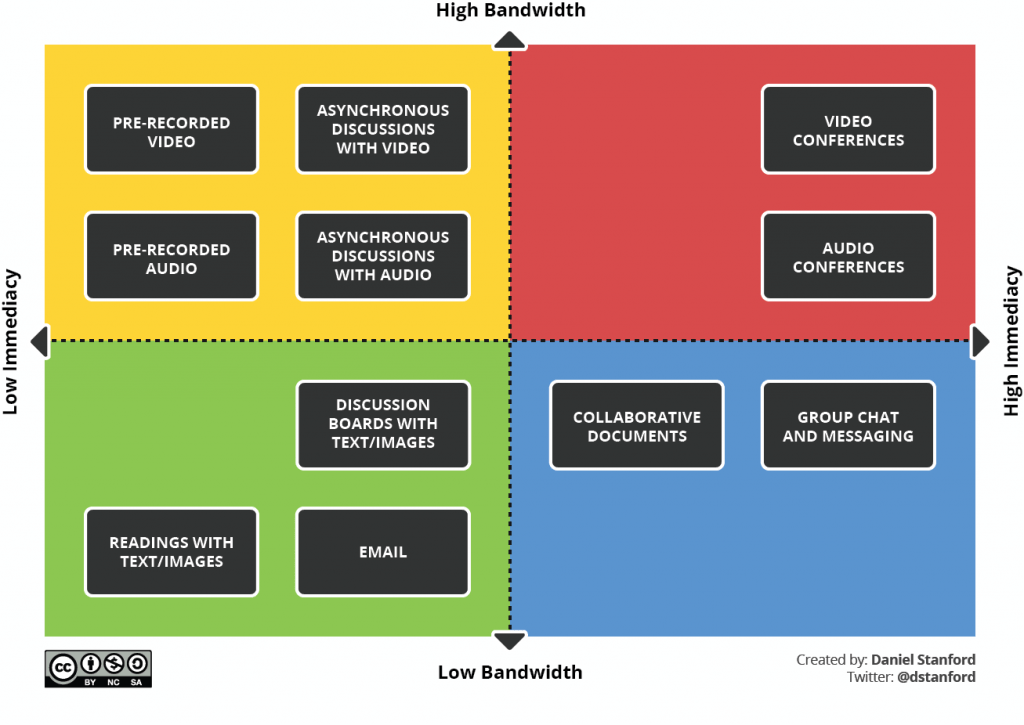Introduction
For many staff, a significant part of the preparation for teaching is preparing content – whether that’s pre-recorded videos, resource lists compiled primarily from library material, material staff have created themselves or OER content that’s relevant. We’ll try to find some pointers to help ease this process, while ensuring the content is engaging.
Links to the Exemplary Module Framework
Section 6 – Teaching Materials and Resources “Ensure all modules include well labelled internal and external resources.“.
In “Assessment” we’ve already noted the very close links between these two areas. Very little teaching has no aspects of assessment, while feedback usually includes teaching opportunities.
In Blend Your Module, we looked at the whole process of blending a module. While it’s all aimed to support student learning, key aspects that you may wish to revisit are
Content delivery
What’s happening when?
In Module Framework there’s a recommendation made to include a weekly planner for students. It can be very simple – have a look at this one that Sarah Halliday (Geography) created.

We’ve also got a short podcast, so you can hear Sarah talking about her rationale for developing this workflow.
How are you going to deliver the content?
When we are thinking about content delivery in a blended environment, it’s useful to keep in mind how you’ll be delivering it. Daniel Stanford reminds us to think about the importance of bandwidth – especially low bandwidth.
Have a look at his full blog post, as he covers different aspects and encourages you to think about what’s really important when delivering content. In a similar vein, Active Learning While Physically Distancing () also takes into account that you may have a group of students, but spread out across the room, making traditional group work difficult.
Breaking content into chunks
A key element of the module framework is to ensure that content is chunked, and that students know roughly how long an activity should take. Clearly, that can be hard to estimate – though Wake Forest University have created a tool to support you in estimating it – but it’s always worth asking students how long something actually took.
- Videos – if you’re pre-recording content – try to keep them as short as possible. Some would recommend as short as 5 minutes
- Remember, some students will listen to just the audio track, so make sure you make the original slides available (those without audio embedded, if you were recording directly into Powerpoint), and let students know when you’re moving between slides.
- Look at the content again – could you be more concise?
- If you give a reading task – give students key facts to look out for.
- Philosophy give students a “concept hunt”. Students are asked to find particular concepts in the weeks reading, and then to explain them to each other. They use the conversation tool in Blackboard.
As Students find note taking difficult, even in the classroom, when it’s online, they may think it’s not as important as it is when they’re in the classroom. In Mary Washington’s “Refocus Online”, there are a number of ideas to help students keep notes, often in a more visual fashion. (See Strategy 5 )
Could you encourage students to keep notes, perhaps sharing them collectively using OneNote or Word? Or could they create and share sketchnotes?
Accessibility and Legal considerations
Clearly content creation, and accessibility are very closely linked. By the start of teaching, all content should be accessible. Disability services have a wealth of resources, which should be your first port of call. In the Introductory post, we shared Helen’s Wakelet; you might find it useful to revisit.
Resources
Relevant 101 sessions
- 2 – Adding content to your module
- 3 – Re-using content
- 5 – Recording and publishing Powerpoint Videos
- 11 – Accessibility
Other LearningX series
- Searching, Using and Sharing This gives a range of pointers to content you can use with your students, particularly Creative Commons / Open Educational Resources (OERs) that allow re-use, and often (though not always) adaptation to meet your particular needs.
External Resources
Mary Washington Refocus – Content
BC Campus Open Education – a wealth of OpenText books, some albeit with a Canadian slant, but many are useful.
BC Campus – Virtual Lab and Science Resource list – whereas the previous link covers text books, these include science labs that can be used remotely.



This sort of fits here – but also elsewhere – a Twitter Thread from Tim Fawns (Edinburgh Uni)
https://twitter.com/timbocop/status/1362710354392924166 (you should be able to see the whole thread from that tweet)